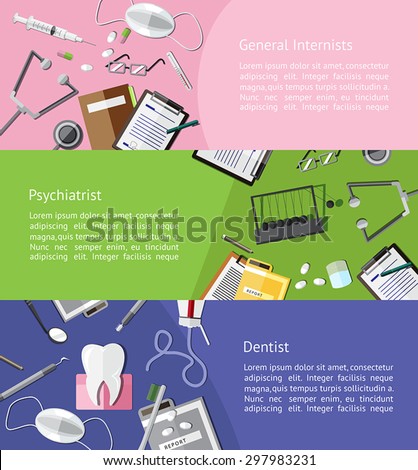Can You Rewire Your Brain For Happiness
Can You Rewire Your Brain For Happiness
Blog Article
What Kinds of Treatment For PTSD Are Available?
Treatment for PTSD assists you discover to manage your symptoms and reclaim control of your life. It can include oral medications or chat treatments. Psychiatric therapy, or talk therapy, is the most usual therapy for PTSD. It can occur one-on-one or in a group setting.
Signs of PTSD can vary from being easily stunned to staying clear of activities and people. These signs can additionally affect relative and youngsters.
Cognitive behavioral therapy (CBT).
CBT concentrates on transforming negative patterns of assuming and behavior that may be creating PTSD symptoms. This therapy is normally temporary and client-centered, with the therapist and client creating therapy goals together. CBT has actually been revealed to reduce PTSD signs in numerous clinical trials making use of clinician-administered and self-report measures of PTSD. These results are moderated primarily by modifications in maladaptive cognitive distortions, with some researches reporting physiological, practical neuroimaging, and electroencephalographic adjustments correlating with reaction to CBT.
TF-CBT makes use of psychoeducation and imaginal exposure to instruct customers just how to better control feelings and manage their traumas. This therapy has actually additionally been shown to enhance PTSD signs in youngsters and adolescents.
Eye motion desensitization and reprocessing (EMDR).
EMDR is an evidence-based treatment that functions by helping people process injury using flexible data processing. It can be utilized on its own or with other treatments. It has been shown to be reliable in treating PTSD. EMDR is commonly made use of worldwide.
It starts with history-taking and a collaborative therapy strategy. During this stage, you will speak about the reason you are looking for therapy and recognize traumatic memories you wish to focus on. The specialist will additionally instruct you methods to take care of any type of hard or distressing emotions that might arise throughout a session.
During the recycling stage, you will certainly recall a traumatic memory while focusing on a back-and-forth movement or audio (like your service provider's hand crossing your face) up until the adverse images, ideas, and feelings connected with it start to reduce.
Somatic experiencing.
A therapist that focuses on this approach will aid you become aware of the physical experiences that accompany your PTSD signs. They'll additionally show you how to determine your autonomic nerve system and its role in the injury response.
Unlike other injury therapies, somatic experiencing doesn't concentrate on memories or emotions. difference between therapy and counseling Rather, specialists work to launch the tension from your body and soothe your signs.
This therapy has actually been found reliable in a variety of randomized controlled tests. However, the arise from these research studies are limited by tiny sample dimensions and other methodological shortages. These shortcomings restrict the outside validity of these searchings for.
Present-centered treatment.
Present-centered therapy (PCT) is a non-trauma concentrated psychotherapy that aims to boost clients' relationships, infuse hope and optimism, and promote problem-solving. While PCT does not have direct exposure and cognitive restructuring techniques of trauma-focused therapies, it has been revealed to be as efficient in reducing PTSD signs and symptoms as trauma-focused CBTs.
In a series of eleven studies, PCT was contrasted to a wait checklist or very little get in touch with control problem and to TF-CBT. PCT was superior to the WL/MA conditions in lowering self-reported PTSD signs and symptoms at post-treatment, and it was related to minimized treatment dropout rates. Nonetheless, the impact size was not large enough to be medically significant.
Meditation.
Meditation aids individuals soothe their nervous systems and practice self-care. This treatment concentrates on the physical sensation of breathing, and individuals may get distracted by ideas or emotions, but it's important to return their emphasis to the breath time and again.
PTSD influences not only those who have actually directly experienced the trauma, but also witnesses and those that deal with emergency -responders or law enforcement. Symptoms of PTSD can consist of intrusive, distressing memories, flashbacks or problems, and problem concentrating or resting.
Staying clear of agonizing memories and sensations is a common response to trauma, yet it only makes signs and symptoms worse. It's important to look for treatment before PTSD hinders your life and connections.
Twin medical diagnosis treatment.
Signs and symptoms of co-occurring PTSD and compound use condition (SUD) are usually linked and both have to be dealt with in recuperation. People that experience PTSD can be more likely to turn to alcohol or medications to self-medicate and momentarily reduce intrusive ideas, flashbacks and adverse mood swings.
PTSD signs include frequent and involuntary traumatic memories or dreams, vibrant and dissociative responses that seem like experiencing again the occasion, preventing areas, people, conversations, or items related to the trauma, feelings of hypervigilance and being constantly on guard or conveniently startled, and feelings of psychological numbness.
Twin medical diagnosis treatment entails treatment and learning healthier coping systems. It might additionally entail pharmacotherapy, such as antidepressants or state of mind stabilizers.